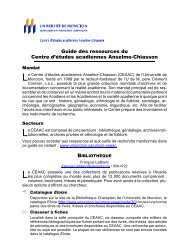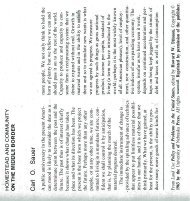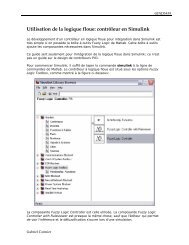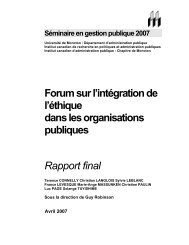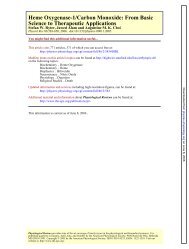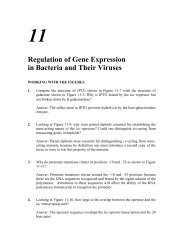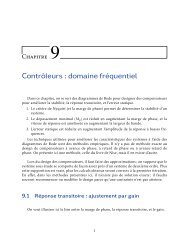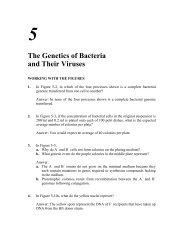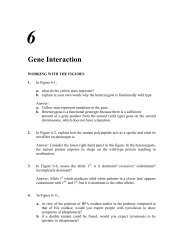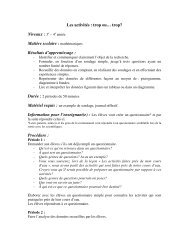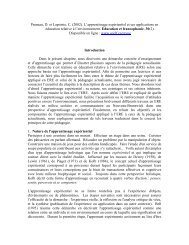IGA 8/e Chapter 2
IGA 8/e Chapter 2
IGA 8/e Chapter 2
Create successful ePaper yourself
Turn your PDF publications into a flip-book with our unique Google optimized e-Paper software.
<strong>Chapter</strong> Two 37amelogenesis imperfecta.a. What mode of inheritance best accounts for the transmission of this trait?b. Write the genotypes of all family members according to your hypothesis.Answer:a. Because none of the parents are affected, the disease must be recessive.Because the inheritance of this trait appears to be sex-specific, it is mostlikely X-linked. If it were autosomal, all three parents would have to becarriers, and by chance, only sons and none of the daughters inherited thetrait (which is quite unlikely).b. I A/Y, A/a, A/YII A/Y, A/–, a/Y, A/–, A/Y, a/Y, a/Y, A/–, a/Y, A/–65. A couple who are about to get married learn from studying their family historiesthat, in both their families, their unaffected grandparents had siblings withcystic fibrosis (a rare autosomal recessive disease).a. If the couple marries and has a child, what is the probability that the childwill have cystic fibrosis?b. If they have four children, what is the chance that the children will have theprecise Mendelian ratio of 3 : 1 for normal : cystic fibrosis?c. If their first child has cystic fibrosis, what is the probability that their nextthree children will be normal?Answer:a. This question is similar to question 49, but this time the discussion beginswith the grandparents rather than the parents. Again, given that a sibling isaffected with a recessive disease, the related unaffected brother/sister willhave a 2 / 3 chance of being heterozygous. In this case, that is one of thegrandparents of both the man and woman about to be married. Given this,the couple will both have a 2 / 3 1 / 2 1 / 2 = 1 / 6 chance of being carriers(heterozygous) and the chance of their having an affected child will be1 / 6 1 / 6 1 / 4 = 1 / 144 .b. If both parents are carriers, there is a 3 / 4 chance a child will be normal anda 1 / 4 chance a child will have cystic fibrosis. Each child is an independentevent, but since birth order is not considered, there are four ways to havethe desired outcome. The child with cystic fibrosis may be the first, second,third, or fourth so assuming the first is affected, the specified outcomewould be a 1 / 4 3 / 4 3 / 4 3 / 4 or a 27 / 256 chance. Now, taking intoaccount the four possible birth orders and the chance that both parents are




